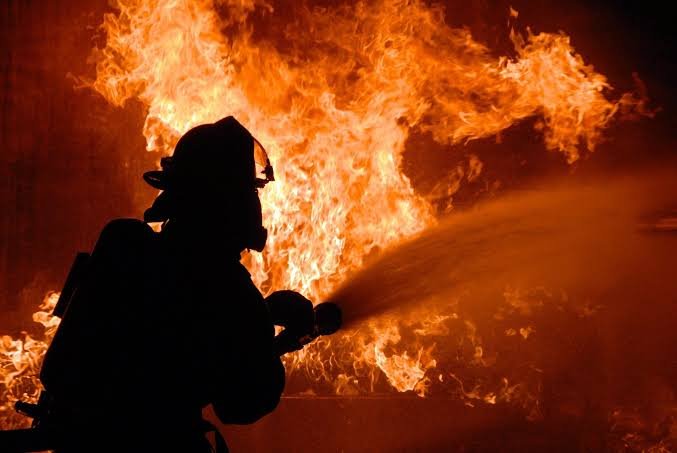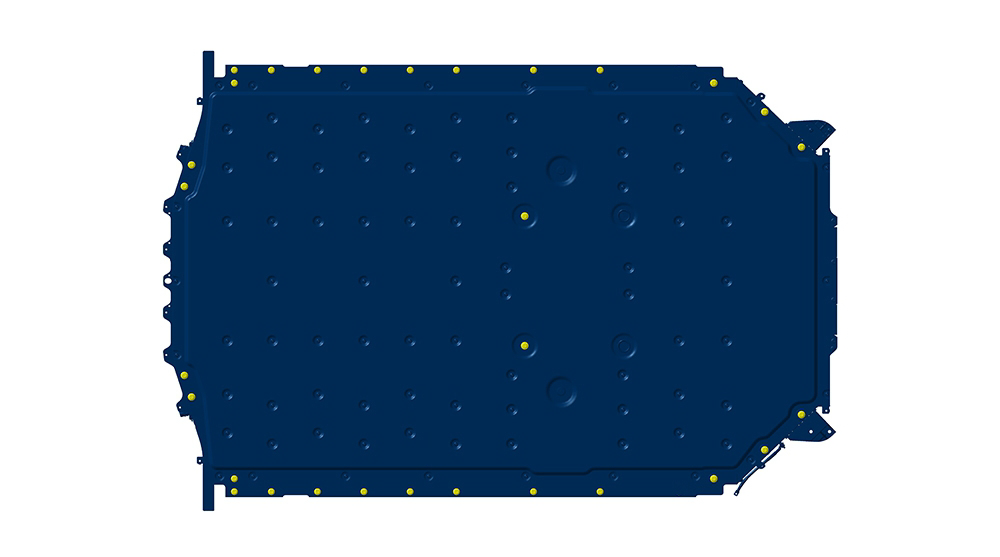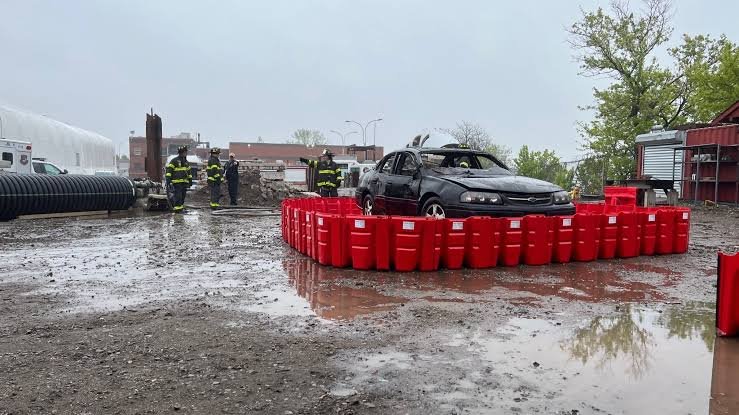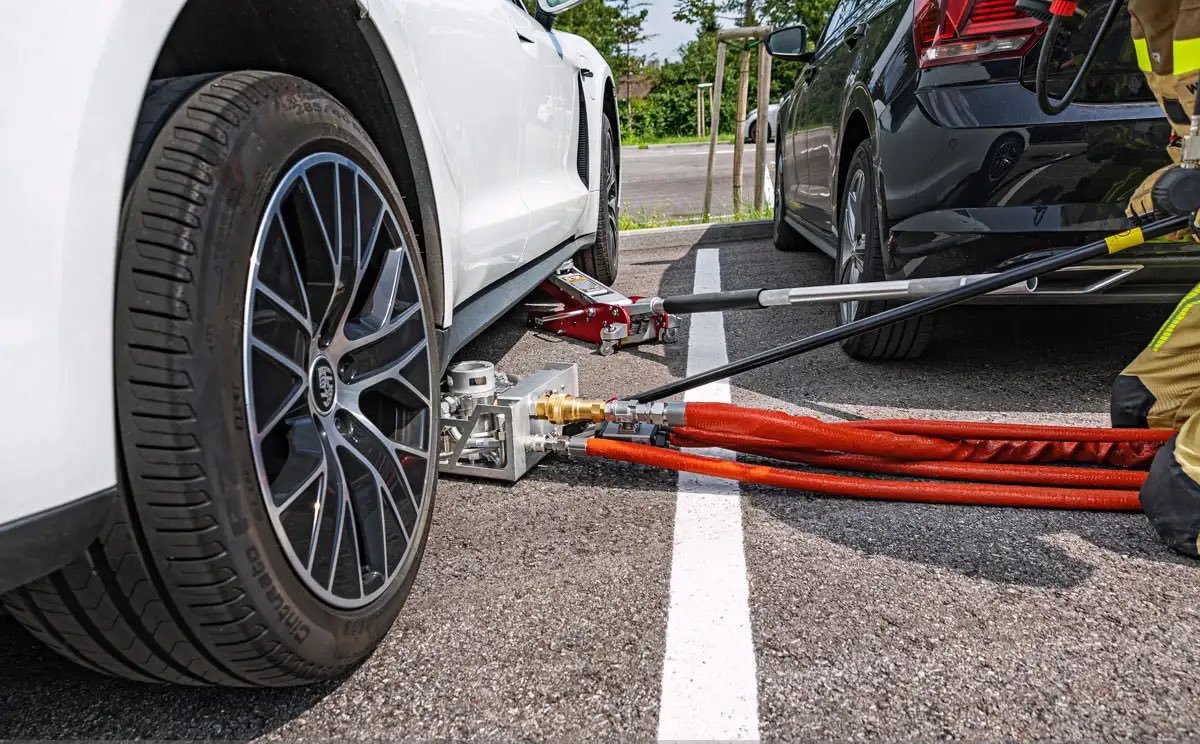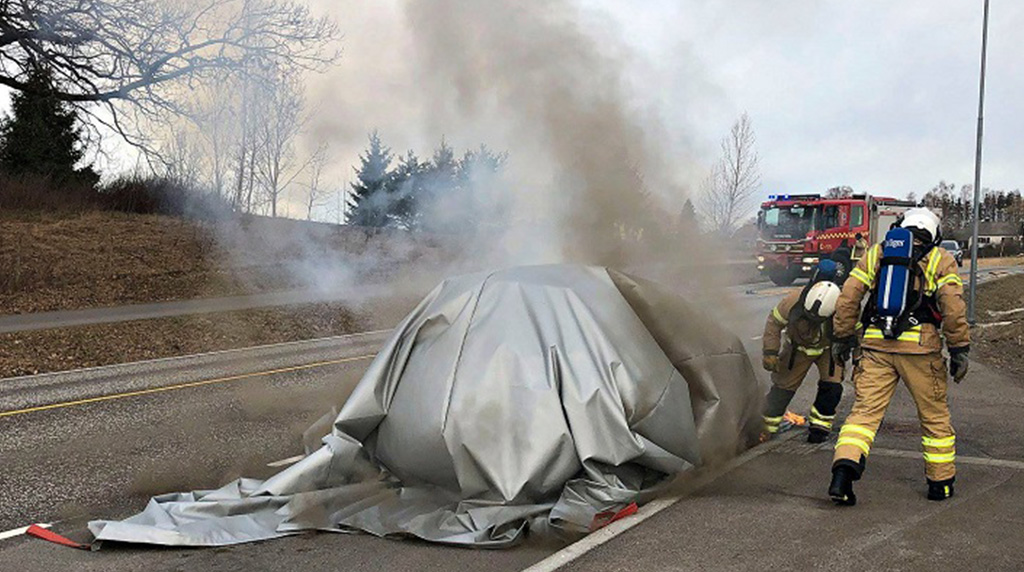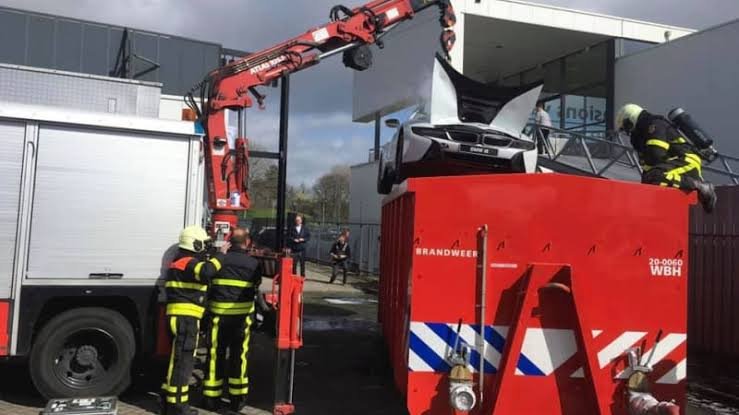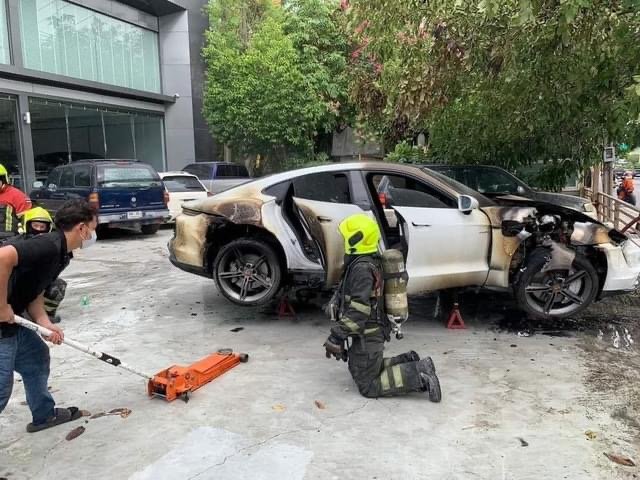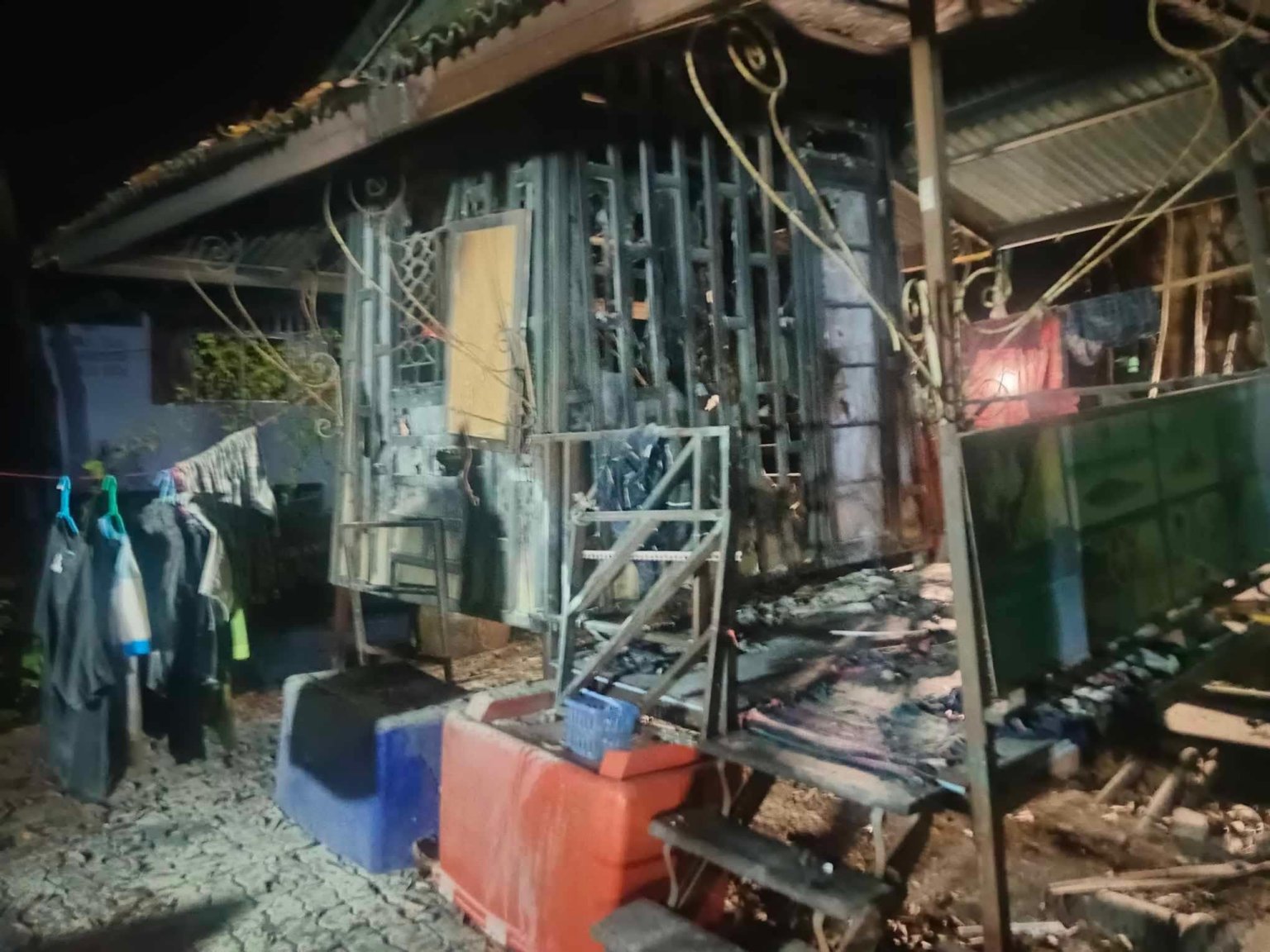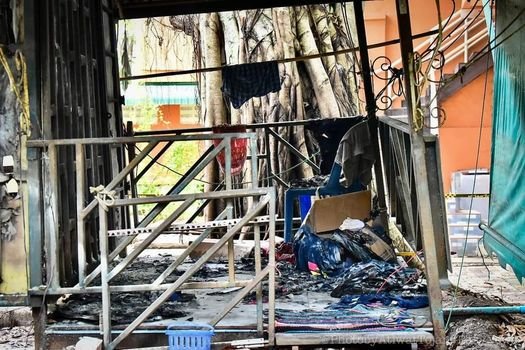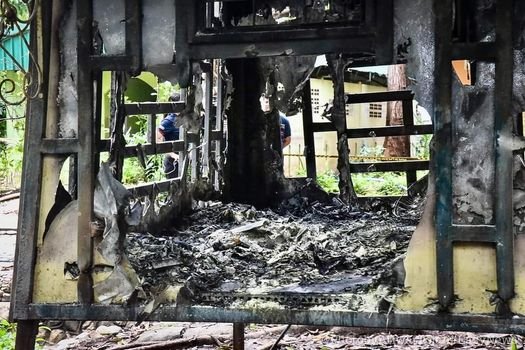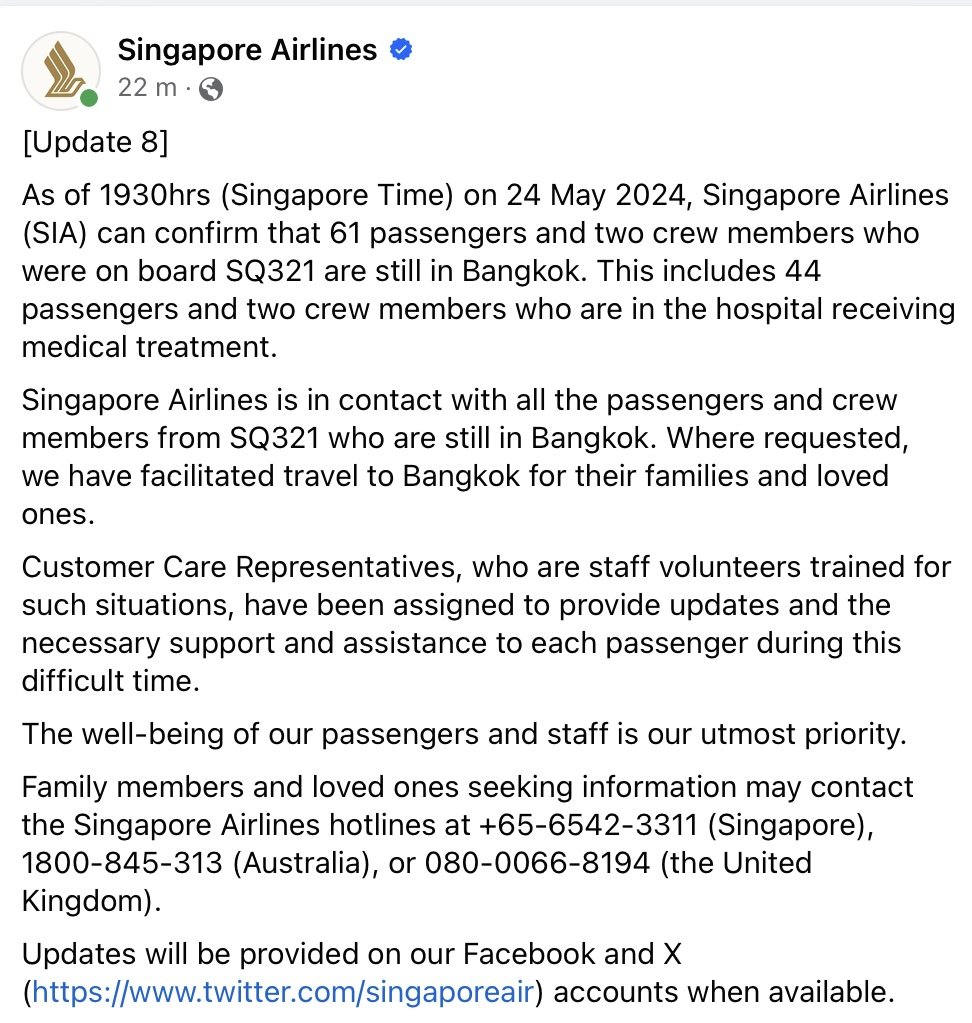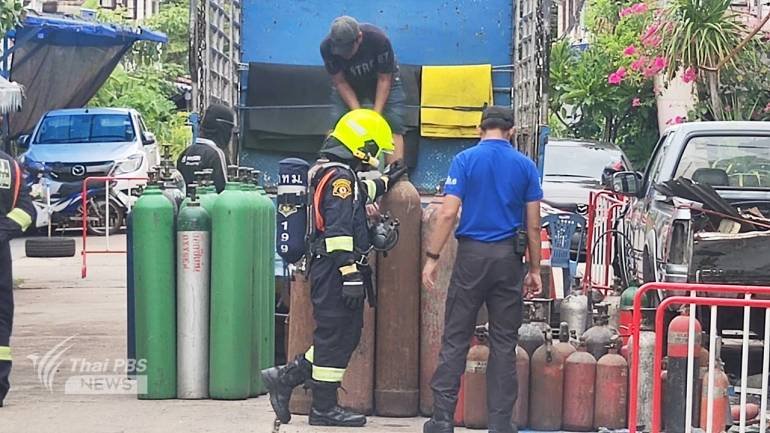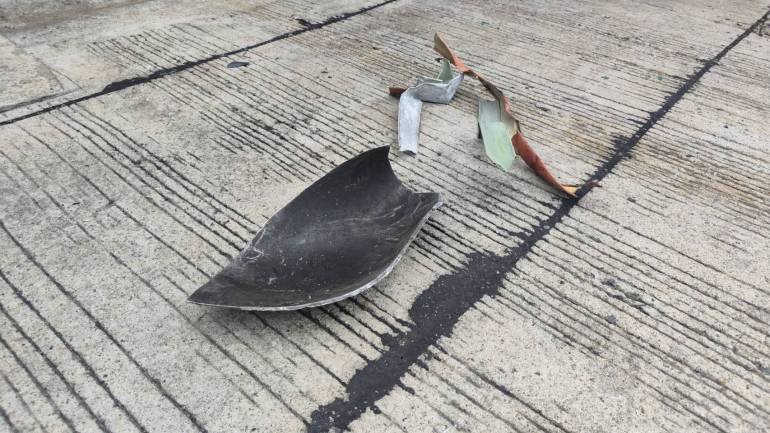-
Posts
8,946 -
Joined
-
Last visited
-
Days Won
2
Content Type
Events
Forums
Downloads
Quizzes
Gallery
Blogs
Everything posted by Georgealbert
-

One dead, 30 injured in Singapore Airlines emergency landing
Georgealbert replied to snoop1130's topic in Thailand News
Singapore Airlines update 10. It states that the aircraft involved has now been flown back to Singapore, so is obviously flight worthy. The investigation team must have downloaded all “black box” data and voice recorders, and were happy to release the aircraft. I would expect further checks, maybe modified C and D checks and maintenance/repairs, before again carrying passengers. -

One dead, 30 injured in Singapore Airlines emergency landing
Georgealbert replied to snoop1130's topic in Thailand News
-

Luxury Porsche worth over 10 million baht catches fire in Bangkok
Georgealbert replied to snoop1130's topic in Bangkok News
-

Luxury Porsche worth over 10 million baht catches fire in Bangkok
Georgealbert replied to snoop1130's topic in Bangkok News
Yes agree, this is not what you expect with EV thermal runaway, but the information and pictures give a very limited view of what happened. Some of the details are lost in translation, and this fire proved fairly easy to extinguish, and although the car is a write off, the fire damage was limited. I think it only made the media because it was a “10 million” Porsche, as the headlines gets people’s attention? Hope you enjoy the new BYD Seal. -

Luxury Porsche worth over 10 million baht catches fire in Bangkok
Georgealbert replied to snoop1130's topic in Bangkok News
I don’t believe the whole battery was involved, and there seems to be no evidence from the pictures of thermal runaway, no reports of jets of flame, but again difficult to comment fully without seeing the damaged battery. The technicians did remove the battery, as it was placed in a portable water dam, but remember they had no concerns about damaging the car, connections, connectors, wires or hoses. In the pictures above there is an axle stand under the front of the car, is this to support the battery when everything is undone, as it is not there when the fire is burning? Remember in an emergency normal practices don’t apply, and improvised solutions found. Also there is no information as to what repairs the car was there for. Found this Taycan battery removal guide online. ”Let's remove the car's HV battery from the car. Easy peasy. Follow Porsche's manual. (It says you need some fancy hydraulic trolley to support the battery - but in reality 4 wood pallets will do). Step 0: De-energize HV system. Remove all body panels underneath the car. Step 1: Drain the coolant. Disconnect one hose going to the radiator at the front of the car, disconnect the two hoses going into the HV battery at the front, and then disconnect one hose going to the motor at the rear. Pry the hose lock with a flat screwdriver it will come out. Step 2: Remove the lining in the trunk, there is a lid which you can open and gives you access to the HV connector for the rear motor. Remove the 3 screws and undo the connector. Step 3: Undo the HV connector at the front of the battery + 48V connector Step 4: Remove all the bolts holding the battery to the frame. Including 4 screws that bolt the battery to the rear subframe (and the earth wire, next to the rear right wheel) Congratulations, now you got the battery out of the car: -

Oxygen Tank Explosion in Bangkok Kills One and Wrecks House
Georgealbert replied to webfact's topic in Bangkok News
Seems this business was not illegal because of a loop hole in the current laws. “Standards Specialist Industrial Standards Institute (TISI), Ministry of Industry, said that once a business that has notified the TISI, then officials will go in and inspect, the business model, safety measures for workers and surrounding area, and then do re inspections every 5 years. if an operator does not inform the TISI, It is not considered illegal, because the request for permission to operate is only voluntary, so does not get inspected. This point has become a legal loophole. Allowing small businesses to operate without considering safety and then non-standard cylinders in a dilapidated condition can be reused. The TISI still does not have the power or tools to bring enforcement action against businesses like this, and are unable to verify how many business establishments are considered to pose a risk to the community and their surrounding areas." https://www.thaipbs.or.th/news/content/340368 -

Oxygen Tank Explosion in Bangkok Kills One and Wrecks House
Georgealbert replied to webfact's topic in Bangkok News
Deleted as posted same post twice. -

Luxury Porsche worth over 10 million baht catches fire in Bangkok
Georgealbert replied to snoop1130's topic in Bangkok News
Thanks, good information, I have not seen before. Seems also that a brine system was also demonstrated last year by a Norwegian ferry company. Battery Briner, which is a spin-off from Faeroese maritime support and transport company Skansi Offshore, and this system is designed for use on car ferries https://local.fo/faroese-invent-new-method-of-extinguishing-lithium-battery-fires/?amp https://www.emobility-engineering.com/extinguishing-lithium-battery-fires/ -

Oxygen Tank Explosion in Bangkok Kills One and Wrecks House
Georgealbert replied to webfact's topic in Bangkok News
Yes I am sure most are unaware of the risks, but that is not just limited to Thailand. I have been amazed how many poorly maintained and badly corroded cylinders I have seen being used, even by large international companies, who’s warehouse/logistic staff just accept anything that a local supplier delivers. The strength and integrity of such cylinders has to be questioned, which this accident appears to be an example of. -

Luxury Porsche worth over 10 million baht catches fire in Bangkok
Georgealbert replied to snoop1130's topic in Bangkok News
Yes one of the ways an EV fire can be dealt with. Plenty of equipment available and sometimes a solution needs improvised like in this case, ranging from large blankets, water dam systems, to high pressure water injections systems. EVs are no bigger risk that many of the goods transported on roads worldwide, and responders have developed policies and techniques for all risks, EVs, NGV, LPG, ICE and dangerous goods that are transported, explosives, gases, flammables, corrosives, toxic substances, oxidises and radiation. Emergency services and manufacturers work to produce guidelines, like posted above. EVs are just another hazard of normal life, and this minor fire was one of many car fires in Thailand, on that day, and only really got reported because it was a Porsche. -

Luxury Porsche worth over 10 million baht catches fire in Bangkok
Georgealbert replied to snoop1130's topic in Bangkok News
Using water on EV fires is a common practice and works better than foam, due the chemical reactions within battery. If you have an electrical fire at home, please do not use water or foam. Foam is made up of water, foam solution and aspirating air, and will conduct electricity. You need to use a dry agent, such as CO2 or dry powder. Also remember that some appliances may hold a stored charged after being turned off. -

Luxury Porsche worth over 10 million baht catches fire in Bangkok
Georgealbert replied to snoop1130's topic in Bangkok News
In all reports, from witnesses and responders, it states the fire started in the battery, after a small explosion. The damage looks right, with the battery running into the front and rear compartment, manly down the right hand side of the car. There are no pictures of the battery to assess the damage., but emergency responders were that concerned about it, they had it removed and submerged in water. There also appears little fire damage to the passenger compartment, with that protected with a fire walls between it and the battery. The only other plausible cause, would be a 2 seat fire, which implies arson, which is extremely doubtful in such a public location. The battery removal is an external job, and the Porsche technicians would have advised emergency responders that it was possible. Yes the battery is damaged, but the removal was done under a controlled situation, responders in place, hose-lines ready and SCBA can easily be donned, so a calculated low risk, that allows the battery to be placed in a water dam, to prevent any further ignition, fire spread and damage to anything else. This link is to the emergency response guide, from the NFPA (National Fire Protection Association), to dealing with a Porsche car. https://www.nfpa.org/education-and-research/emergency-response/emergency-response-guides/porsche -

Luxury Porsche worth over 10 million baht catches fire in Bangkok
Georgealbert replied to snoop1130's topic in Bangkok News
It has now been confirmed that the jacks were not the cause of the fire. Emergency responders got the showroom technicians to raise the car to help extinguish the fire, then the battery was removed to be submerged in water to prevent any further possible problems. -

Temple Fire in Nonthaburi Claims the Lives of Three Boys
Georgealbert replied to snoop1130's topic in Bangkok News
This is only my opinion, but looking at pictures from the night and after the fire was out, it seems this may have been a slow burning fire, as the external damage is limited. The roof, clothing hanging outside, plastic chair and matting on the entrance platform shows little damage from flames or radiated heat. Seems some of the structure damage, cutting through the side, was done when removing the bodies. Internally everything is burnt, but carefully removing the burnt remains off the floor, could indicate burn patterns, pointing the area the fire started and any possible flammable liquids if present. The police reported that there was soot in the lungs, so the victims had clearly breathed in lots of smoke, but the autopsy would also have shown heat/burn damage in the windpipe and possibly lungs. Smoke gases have a lot higher temperature at the ceiling level, but if the victims were asleep this would be limited. If the victims have been standing and trying to get out, high temperature fire gases would have been breathed into the lungs and leaving visible evidence/damage. There was very little, reported inside the room to burn, a fan, some bedding and the walls linings, plus sadly the victims and their clothing. The positioning of the victims, would indicate that their were asleep and overcome by smoke, long before being burnt. Body posture is always a poor indicator of what the victim was doing before death, as fire and heat effects on muscles and body tissue, will tend to contract the limbs. I doubt that the final investigation details will be reported, as with the difficulties of identifying individual bodies, it will take weeks to complete and the media will have moved on by then. -

Temple Fire in Nonthaburi Claims the Lives of Three Boys
Georgealbert replied to snoop1130's topic in Bangkok News
Reported update today. “Today, 24 May 2024, Pol. Col. Somphon Wongsrisunthon, deputy commander of Nonthaburi Provincial Police, said he received the autopsy results of all 3 children from the Institute of Forensic Science and they were found to have soot in their lungs. For the detailed results, of the autopsy they will have to wait 1-2 weeks, because identity must be checked against DNA of the parents to confirm identity.” https://www.thaipbs.or.th/news/content/340351 -

One dead, 30 injured in Singapore Airlines emergency landing
Georgealbert replied to snoop1130's topic in Thailand News
-

Luxury Porsche worth over 10 million baht catches fire in Bangkok
Georgealbert replied to snoop1130's topic in Bangkok News
This seems to be an EV, Porsche Taycan. The car was reported to be awaiting repairs, when a fire started in the battery. A picture of the other side of the vehicle, shows that the car raised on jacks. The question is was this done by responders to aid firefighting, which would be unusual, or was the car being jacked for repairs, in the wrong location and damaged the battery. Battery location on the Taycan shown below. Given the relative ease reported in extinguishing the fire, this would not appear to be a thermal runaway battery event.- 57 replies
-
- 10
-

-

-

-

-

-

Dead Body Found Under Electrical Panel on Bangkok's Sidewalk
Georgealbert replied to snoop1130's topic in Bangkok News
This Thai news report video, shows the CCTV of victim climbing into the disused box. -

Singapore turbulent flight: Aussie survivor’s desperate plea
Georgealbert replied to webfact's topic in Thailand News
Try this aviation accident site first. https://avherald.com/h?article=518e5d47&opt=0 Then maybe look at the details on this thread, but don’t let the real facts get in the way on a total false, in every detail, conspiracy! i notice you never posted a link the false claim. -

Singapore turbulent flight: Aussie survivor’s desperate plea
Georgealbert replied to webfact's topic in Thailand News
Yes agree, I posted this in the other thread, but worth posting again here. Following this incident, Singapore Airlines have now issued a revised policy for cabin crews routines/services. “The first change is that cabin crew must now be seated and belted in whenever the seatbelt sign goes on, as opposed to previously where they would only suspend hot drinks service, but continue with all other activities unless the pilot deemed the turbulence severe enough for the crew to be seated as well. The second change is that the second meal is served at the mid-point, instead of the usual 2.5 hours before landing. The idea behind this is that the weather closer to Singapore can be more unpredictable, and because of the requirement that cabin crew are seated whenever the seatbelt sign goes on, there may not be sufficient time to complete the service otherwise“ https://milelion.com/2024/05/23/singapore-airlines-modifies-cabin-service-routines-following-turbulence-incident/ The airline said it’s taking a “more cautious approach” to managing turbulence, but the policy revision stops short of requiring all passengers to wear seatbelts throughout the flight. -

Singapore turbulent flight: Aussie survivor’s desperate plea
Georgealbert replied to webfact's topic in Thailand News
You do know the plane was going to Singapore, it was not starting to make a descend into Bangkok. It hit turbulence, that lasted about 10 seconds, so easy to see why other flights never experienced the same problem, there is a lot of sky up there. After the turbulence event, the pilots made a controlled descend of 6000 feet, either to find better weather or on the instruction of ATC after declaring the emergency and asking to divert to BKK. This is nothing like the 737 Max 8 incidents, as that was a flight control system, which has never been fitted on the 777. I suggest avoid alternative truth websites, that start such conspiracy nonsense like this. Post a credible link to you theory. -

Oxygen Tank Explosion in Bangkok Kills One and Wrecks House
Georgealbert replied to webfact's topic in Bangkok News
Today, all remaining cylinders were removed from the building, under the supervision of the local authorities and fire service. An expert at the scene confirmed that the explosion was from an acetylene cylinder. https://www.thaipbs.or.th/news/content/340344 -

Oxygen Tank Explosion in Bangkok Kills One and Wrecks House
Georgealbert replied to webfact's topic in Bangkok News
Fully agree about the poor zoning and lack of regulations, and awareness of safety issues is lacking. Please remember also that this risk can be found worldwide in any home garage or work shop, where someone does a bit of welding. This was a single cylinder that exploded and caused the damage and harm. -

Oxygen Tank Explosion in Bangkok Kills One and Wrecks House
Georgealbert replied to webfact's topic in Bangkok News
I would suggest 4 possible ways; 1. Was only collecting empty cylinder, taking to supplier and returning full cyinders. 2. Oxygen booster pump, decanting from larger cylinders to small. 3. Oxygen compressor, making the O2 from the air, but thst would seem unsuitable for this business, due to time taken and costs. 4. Large oxygen tank, liquid or gas, but there is no evidence in the pictures or videos of this. The only reasons I can think that a oxygen cylinder would explode like this, is long exposure to fire, very badly corroded/damaged cylinder or contamination with oil and grease.The second news report suggested it was an acetylene cylinder, which would seem a lot more feasible.. -

Oxygen Tank Explosion in Bangkok Kills One and Wrecks House
Georgealbert replied to webfact's topic in Bangkok News
Fully agree, but the problem is the acetylene is one of the most widely used gases worldwide, for welding and cutting. Acetylene is highly flammable and unstable, with the cylinders having acetone added to help stabilise the gas. The cylinders need to be stored correctly, as it is sensitive to heat, including direct sun light, and mechanical shock, such as being dropped or hit. If exposed to heat or mechanical shock, the acetylene can start to decompose and self heat. Once decomposition has started it is near impossible to stop without taking emergency actions, and will continue until the high pressures produced will cause the cylinder to explode. Emergency responders procedures are to submerse the cylinder fully in water to cool it and evacuate the area, then checking the temperature of the cylinder, which is best done using TIC (thermal imaging camera), until is cooled down, showing the decomposition had been stopped.

